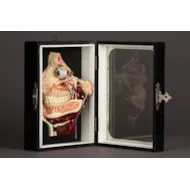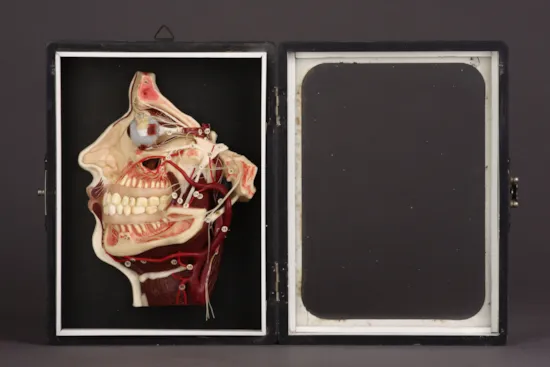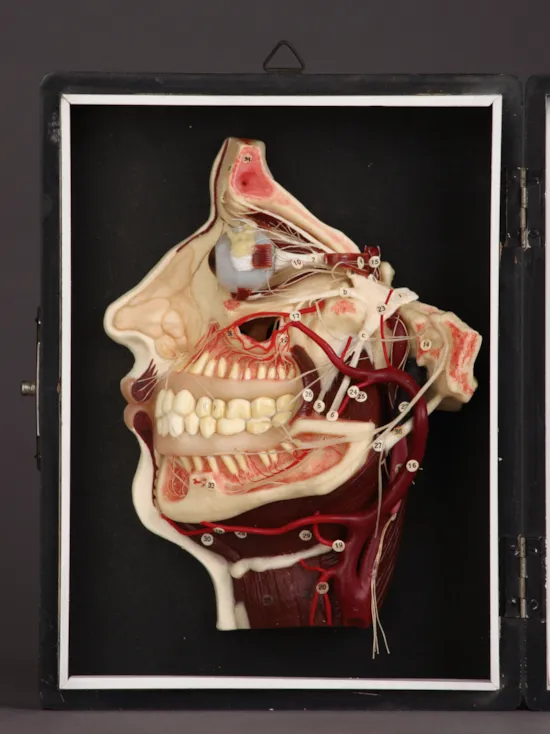German Anatomical í‰corché Wax Model of the Human Head
A German Anatomical í‰corché Wax Model of the Human Head
Enclosed in its original wood and glass case, hinged to open at the side. A blue paper label to the reverse ‘… Ehrmitte Werke Berlinishe Verlag Sanstrar Gmbh Berlin NW’ A printed paper list entitled ‘Nerves, Arteries, Veins and Muscles of the Head. External Aspect’ naming each one corresponding to the numbered paper labels detailed on the wax model
Circa 1890-1900
Size: 24cm high, 18cm wide, 7.5cm deep – 9½ ins high, 7 ins wide, 3 ins deep
See Finch & Co catalogue no. 6, item no. 24, for an example of a sectioned anatomical model of the human head
Enclosed in its original wood and glass case, hinged to open at the side. A blue paper label to the reverse ‘… Ehrmitte Werke Berlinishe Verlag Sanstrar Gmbh Berlin NW’ A printed paper list entitled ‘Nerves, Arteries, Veins and Muscles of the Head. External Aspect’ naming each one corresponding to the numbered paper labels detailed on the wax model
Circa 1890-1900
Size: 24cm high, 18cm wide, 7.5cm deep – 9½ ins high, 7 ins wide, 3 ins deep
See Finch & Co catalogue no. 6, item no. 24, for an example of a sectioned anatomical model of the human head
Wax Models were introduced in Europe for the teaching of anatomy shortly after the Renaissance. During the 18th century with the development and advance of medical education the demand for natural anatomic teaching specimens far outstripped the available supply. Wax models proved a useful means for demonstrating anatomic points as well as being less perishable and less odiferous. The lifelike colours and textures of the skin in wax models was superior to that of cadavers and their resistance to deterioration was a definite advantage over actual preserved specimens. Although wax models are no longer made the antique ones remain useful as teaching aids and as records of changes in the diagnosis and appearance of diseases. Unique and fascinating they are now an almost lost form of art and representation.
German Anatomical í‰corché Wax Model of the Human Head

SOLD




YOU MAY ALSO LIKE

